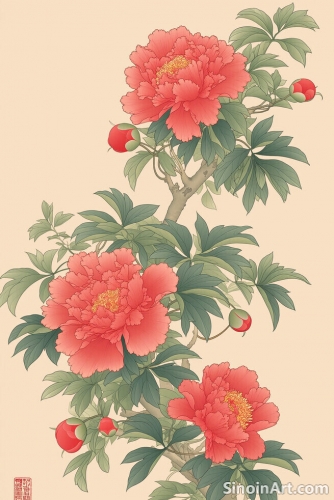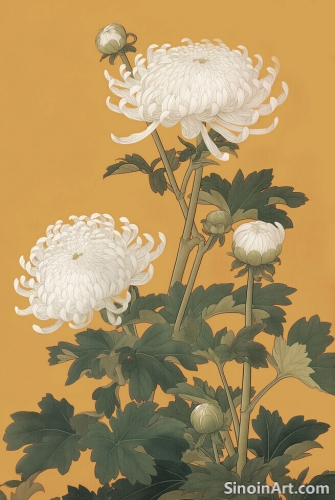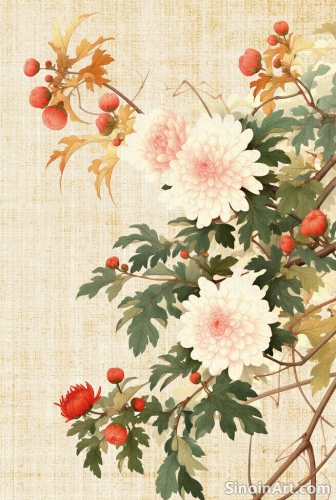Gongbi and the Depiction of Water: Capturing the Flow and Spirit
|
Water, a vital element in the Chinese landscape and a symbol of life, change, and spirituality, is often depicted in Gongbi painting with meticulous care and a deep sense of understanding. The precise rendering of flowing streams, tranquil pools, and crashing waves demonstrates the artist’s mastery of technique and the underlying philosophical appreciation for nature. The detail used to depict water demonstrates the artist's depth of understanding.  Gongbi artists employ a variety of techniques to depict the subtle variations in the movement of water, from the delicate ripples on a pond to the force of a waterfall. These meticulous representations reflect both a keen observation of nature and technical mastery of the medium. The fine linework and layering of color work to create the sense of movement.  The application of color in the depiction of water also plays a crucial role in creating the desired effect. Subtle shifts in color and value are used to suggest the depth, clarity, and reflectivity of the water. These subtle shifts in color help create the sense of three-dimensionality within the picture plane.  Beyond mere physical representation, the depiction of water in Gongbi painting is often imbued with symbolic significance. Water can represent the flow of time, the power of change, and the interconnectedness of all things. The use of symbolic elements enriches the overall meaning of the piece. The relationship between water and other elements in a painting, such as rocks, trees, and mountains, also adds to the overall sense of harmony and balance that is often seen in Gongbi works. The careful placement and proportion of elements contributes to the work's ability to evoke a sense of peace and serenity. Ultimately, the depiction of water in Gongbi painting is not just about accurately representing its visual appearance; it is also about capturing its essence, its spirit, and its symbolic significance within the context of Chinese philosophy and culture. The careful approach to this subject matter conveys not only visual beauty, but also a deeper connection to nature. |
Tag : Water in Gongbi, Chinese water painting, water representation, nature in art, landscape art
Related information
- Learning Gongbi: A Guide for Aspiring Artists
- Unveiling the Techniques of Gongbi: A Step-by-Step Guide
- The Gongbi Line: A Foundation of Precision and Expressiveness
- The Use of Gold Leaf and Other Embellishments in Gongbi
- The Materials of Gongbi: A Palette of Tradition
A practical guide for aspiring Gongbi artists, covering essential learning steps, materials, and practice techniques.
This article provides a step-by-step guide to the techniques involved in creating a Gongbi painting, covering the sketching, outlining, layering, shading, and final detailing stages.
Gongbi lines are characterized by their fineness, evenness, and consistent width. Artists utilize specialized fine-pointed brushes to create these lines, ensuring that every stroke is deliberate and controlled. The consistent thickness of the lines requires years of practice, and this skill is central to the Gongbi style. It is within the precise lines that the work begins to define itself.
This article explores the use of gold leaf and other embellishments in Gongbi painting, detailing their application, symbolic significance, and contribution to the visual richness and overall aesthetic of the artwork.
This article explores the essential materials used in Gongbi painting, focusing on the unique characteristics of brushes, silk, xuan paper, mineral pigments, and other tools.